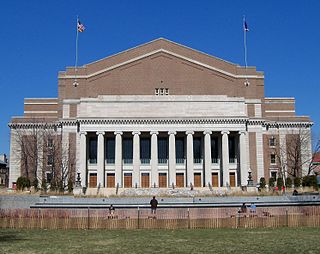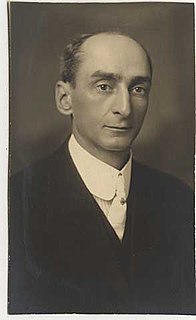The University of Minnesota system is a public university system with five campuses spread throughout the U.S. state of Minnesota. It has one of the largest endowments among public universities in the U.S., and also receives annual funding from the State of Minnesota.

The University of Minnesota, Twin Cities is a public land-grant research university in the Twin Cities of Minneapolis and Saint Paul, Minnesota. The Twin Cities campus comprises locations in Minneapolis and Falcon Heights, a suburb of St. Paul, approximately 3 miles (4.8 km) apart. The Twin Cities campus is the oldest and largest in the University of Minnesota system and has the ninth-largest main campus student body in the United States, with 51,327 students in 2019–20. It is the flagship institution of the University of Minnesota System, and is organized into 19 colleges, schools, and other major academic units.

Williams Arena is an indoor arena located in Minneapolis, Minnesota. It is the home arena for the University of Minnesota's men's and women's basketball teams. It also housed the men's hockey team until 1993, when it moved into its own building, Mariucci Arena. The building is known as "The Barn", and its student section is known as "The Barnyard".

The University of Minnesota Morris (UMNM) is a public liberal arts college in Morris, Minnesota. It is part of the University of Minnesota system and was founded in 1960 as a public, co-educational, residential liberal arts college offering Bachelor of Arts degrees.

Hamline University is a private liberal arts college in Saint Paul, Minnesota. Founded in 1854, Hamline is known for its emphasis on experiential learning, service, and social justice. The university is named after Bishop Leonidas Lent Hamline of the United Methodist Church. Hamline is the oldest university in Minnesota, the first coeducational university in the state, and is one of five Associated Colleges of the Twin Cities. The university is composed of the College of Liberal Arts, School of Education, School of Business, and the Creative Writing Programs. Hamline is a community of 2,117 undergraduate students and 1,668 graduate students.

The University of Minnesota Crookston is a public university in Crookston, Minnesota. One of five campuses in the University of Minnesota System, UMN Crookston had a fall 2018 enrollment of 1,834 undergraduate students. Students come from 20 countries and 40 states.

Cyrus Northrop Memorial Auditorium is a performing arts venue at the University of Minnesota in Minneapolis, Minnesota. It is named in honor of Cyrus Northrop, the university's second president. Various events are held within the building, including concerts, ballet performances, lectures, and graduations.

The Minneapolis Armory is an 8,400-person capacity music and events venue located at 500 South 6th St. in Downtown Minneapolis, Minnesota, United States. The Armory was built for the Minnesota National Guard in 1935–36 and also used by the Minneapolis Lakers of the NBA from 1947-1960. It was listed on the National Register of Historic Places in 1985.

The University of Minnesota Marching Band is the marching band of the University of Minnesota and the flagship university band for the state of Minnesota. The Pride of Minnesota serves as the university’s ambassador, representing the school at major events both on and off campus. The band performs before, during, and after all home Golden Gopher football games and bowl games, occasional away games, local parades, numerous pepfests, exhibition performances, as well as a series of indoor concerts at the end of the regular football season. Members of the band, along with non-member students, also participate in smaller athletic pep bands that perform at other major sporting events, including men's hockey, men's basketball, women's hockey, women's basketball, and women's volleyball. Here is a link to the intro video and fight songs of the Pride of Minnesota.

The College of Biological Sciences (CBS) is one of seven freshman-admitting colleges at the University of Minnesota. Established in 1869 as the College of Sciences, the College of Biological Sciences is now located on both the Minneapolis Campus and the St. Paul Campus. CBS is a college that focuses its undergraduate and graduate attention towards research. The dean is Valery E. Forbes. The Associate Dean for Graduate Education is Carrie Wilmot, the Associate Dean for Undergraduate Education is John Ward, the Associate Dean for Research is David Greenstein, and the Associate Dean for Faculty is Marlene Zuk.

The Minnesota Golden Gophers men's basketball team represents the University of Minnesota in NCAA Division I college basketball competition. The Golden Gophers competes in the Big Ten Conference and play their home games at the Williams Arena.

Louis Joseph "L. J." "Doc" Cooke was the first head men’s basketball coach at the University of Minnesota. He coached the Minnesota Golden Gophers men’s basketball team for 28 seasons. Cooke also served as the university’s athletic director for a time and is responsible for the creation of Little Brown Jug tradition between Minnesota and the Michigan Wolverines, the longest existing traveling trophy tradition in college football.
The University of Minnesota College of Liberal Arts (CLA) is the largest college of the University of Minnesota in the Twin Cities of Minnesota. Established in 1868, the College of Liberal Arts offers more than 65 majors and 70 minors to its more than 13,600 undergraduate students, as well as more than two dozen majors to its 1,500 graduate students. The various departments of the College of Liberal Arts are housed in several buildings located in both the East Bank and West Bank areas of the university's Minneapolis campus.

The University of Wisconsin Armory and Gymnasium, also called "the Red Gym", is a building on the campus of University of Wisconsin–Madison. It was originally used as a combination gymnasium and armory beginning in 1894. Designed in the Romanesque revival style, it resembles a red brick castle. It is situated on the shores of Lake Mendota, overlooking Library Mall, and adjacent to Memorial Union.

The Kautz Family YMCA Archives, located at the University of Minnesota Libraries in Minneapolis, United States, archives the historical records of the U.S. YMCA national association, YMCA of the USA, the records of the Minneapolis and Greater New York YMCAs, and those of the Y's Men International, a service club in partnership with the YMCA.
The Institute for Advanced Study (IAS), located in Minneapolis, Minnesota, is one of seven University-wide centers at the University of Minnesota. According to its mission statement, the IAS "supports innovative research and creative activity across disciplines, facilitates collaboration, fosters critical engagement with issues and ideas, and builds generative relationships between the University and the larger communities locally and globally." It accomplishes this mission by providing fellowships and administrative support that encourage interdisciplinary and collaborative research and creative work across the University and beyond. The Institute is a member of the Consortium of Humanities Centers and Institutes and Humanities Without Walls.

The LSU Gym Armory building on the campus of Louisiana State University in Baton Rouge, Louisiana was completed in 1930.

Walter Library is an academic library located on the East Bank campus of the University of Minnesota in Minneapolis, Minnesota. It currently houses the College of Science and Engineering Library and Dean's Office, the Digital Technology and Digital Media Centers, the Learning Resources Center, and the Minnesota Supercomputing Institute. Walter Library is situated along Northrop Mall, a grassy area at the center of campus that is bordered by the university's physics, mathematics, chemistry, and administration buildings, plus Northrop Auditorium.
Marshall-University High School was a public junior high and high school serving grades 6–12 in Minneapolis, Minnesota.
Punchinello Players, founded in 1914, was a theatre organization of the University of Minnesota. When it closed it was the second oldest student-run community theater in the U.S. Punchinello - located on the St. Paul campus - originated for the purpose of improving the lives of the greater community. As a university-associated theater it changed with the times and continued to explore and interrogate the human condition. Punchinello Players closed in 1994 due primarily to its home, North Hall, being slated for demolition.















